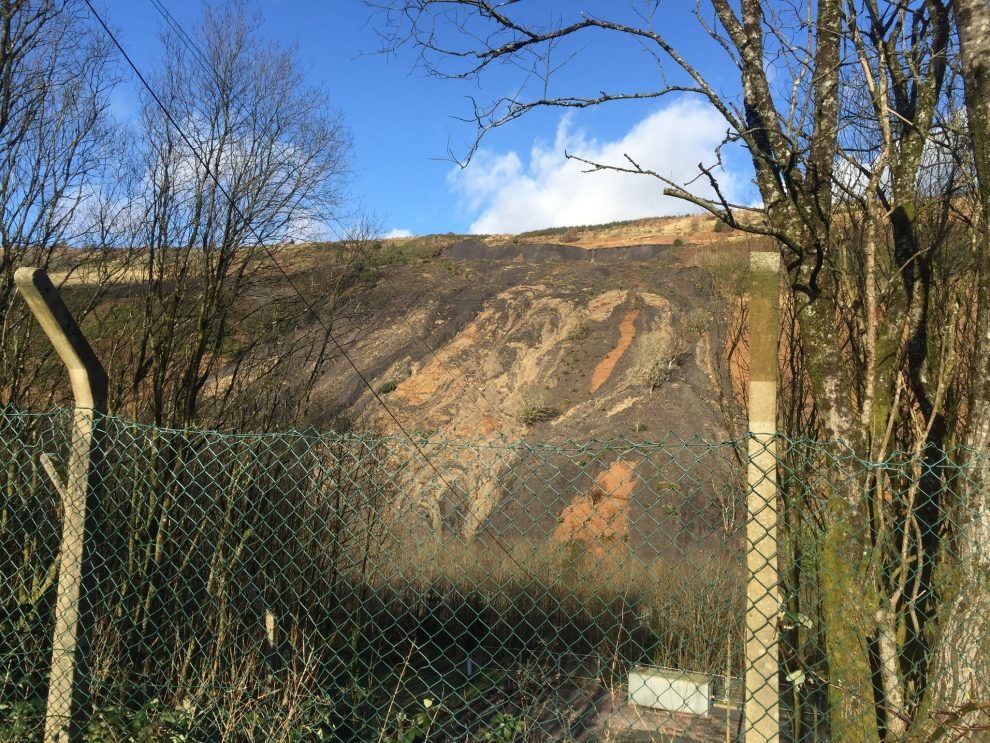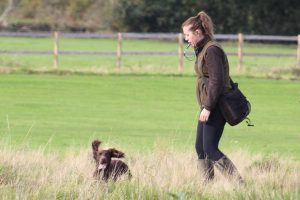THREE years ago during Storm Dennis around 60,000 cubic metres of material at a former Rhondda coal tip slid down the mountain.
In February 2020, three storms in succession caused the landslip on Llanwonno hillside in Tylorstown.
The landslide blocked the river valley, broke a foul sewer, covered a water main with several metres of debris, and covered a footpath and cycle path and the area was immediately closed to members of the public for safety reasons.
Storm Dennis was a one in 200-year storm event that saw Maerdy at the top of the Rhondda Fach record the highest volume of rainfall in Wales.
The site is a Category D tip and was being inspected every three months against a set of monitoring criteria prior to the storm, and inspections have subsequently increased in frequency since.
Since the storm, work has been going on in order to make the area safe and the Local Democracy Reporting Service has been looking back on what has been done so far.
Phase one
The first phase of the works involved emergency drainage and vegetation clearance and this was done in the weeks following the storm.
Phase two
The second phase involved embankment scour repairs which started in late June 2020 and was finished in June 2021.
Phase three
Phase three involved the moving of material to receptor sites and temporary reinstatement of paths which started in late June 2020 and was finished in June 2021.
An additional phase of work to stabilise the slope above the one remaining closed footpath was completed in the autumn of 2021.
Phases two and three were estimated to cost £2.5m and meant that the slipped material had now been removed from the valley floor, the river had been reinstated to its correct line and level and a series of drainage works had been done.
It also allowed the two walking and cycling routes on the leisure centre side of the river to reopen.
The third route running through the area, on the opposite side of the river, has been repaired but has remained closed as there are future phases of work to stabilise the hillside above.
While the closure area for this path is around 1.5km, the wider route it forms a part of is open and can be accessed from Station Road in Ferndale and the council intends to reopen all routes in the future.
The three receptor sites are owned by Rhondda Cynon Taf Council, and are located to the north of the landslip site, alongside the former railway line.
Receptor Site B (nearest the landslip site) formed part of the old railway sidings, and receptor Site A1 and A2 was a former colliery site footprint.
Planning permission for the receptor sites (temporary) for the slip material was subsequently applied for retrospectively, and it was granted by the planning committee on Thursday, January 21, 2021.
The council says that placing the spoil material on these sites has significantly reduced the amount of material which would have otherwise be moved along the public highway.
The receptor sites have also ensured that the wider works are self-contained – and therefore the carbon footprint of the works is greatly reduced as there have been virtually no vehicles on the public highway from the site, which would otherwise cause noise, vibrations, air pollution, dust and damage to the carriageway.
It is estimated that the process of moving 60,000 tonnes of material would have required 6,000 lorry movements – which the council said was avoided by utilising the receptor sites.
The council says there will be the opportunity for residents to have their say in the final end use through a future consultation process.
At present, the council is considering the location to be converted into a riverside walkway and bike use area, similar to the existing sites at Barry Sidings Country Park and Mountain Ash Riverside Park.
Phase four
Phase four involves the remediation of the remaining tip on the hillside with more than £10m going towards this.
Upon completion of the remediation works, an active travel community route for pedestrians and cyclists between Maerdy and Pontygwaith can then be delivered, subject to Welsh Government funding and it would pass through the riverside park scheme at Tylorstown.
Planning permission for phase four was granted in October 2022 and works started on site in April 2023 and it will enable future enhancements to the community route.
It involves relocating colliery material to a site adjacent to the tip, and stabilising the upper tip site.
It also includes new drainage work, the formation of access tracks and paths and vegetation.
There are also planned improvement works to several structures along the proposed community route in the future with it being resurfaced and works to the receptor sites completed.
In terms of next steps, on Thursday, August 17, Rhondda Cynon Taf Council’s planning committee will consider more applications related to the works.
One involves the permanent retention of a land form created by deposit of approximately 19,700 cubic metres of material from Tylorstown landslip at land across from Oaklands Business Park in Ferndale which includes the planting of trees and the other is the permanent retention of approximately 740 cubic metres of material from Tylorstown landslip on land to the south of Station Road in Ferndale including proposed benches and small footbridges
Ecological impact
In terms of the ecological impact, a number of surveys have been done by consultant ecologists in liaison with the council’s ecologist and Natural Resources Wales around the clearance of undergrowth and trees from the receptor sites – together with the impact on flora and fauna.
The council says that all parties continue to work together to ensure the impact on the environment is minimised where possible.
It adds that consideration is being given to the final receptor sites and how this will benefit the ecology of the river valley.



















